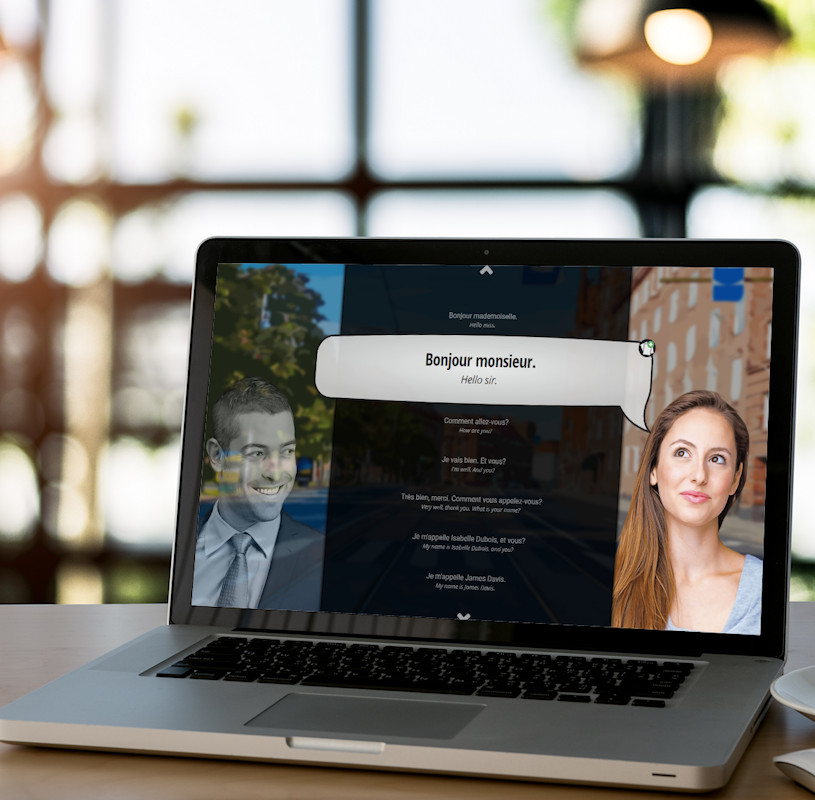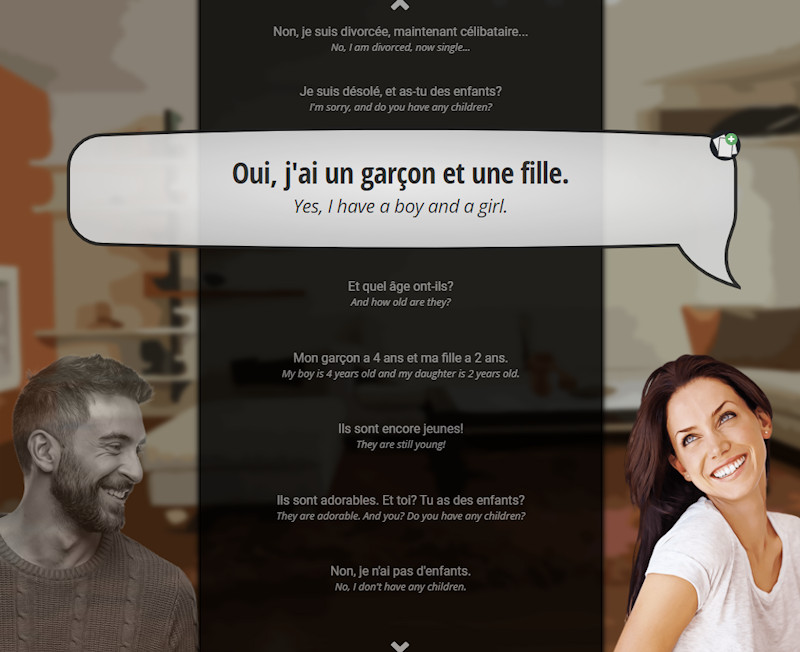A single conversation across the table with a wise man is better than ten years mere study of books.Henry Wadsworth Longfellow
This can be very true, and when you have your first conversation with someone from a different country in their mother tongue. The complete reason behind your studying will come to life.
You’ve now learned pronunciation, some grammar, vocabulary and different aspects of verbs. What do we get when we put everything together? We get conversations. Being able to have a full conversation is what most language learners aspire to and it can be the most satisfying experience. Each section on its own will not get you very far in terms of having a real-life conversation. You can have immaculate pronunciation, if you don’t know any vocabulary, good luck having a conversation. You can know a bunch of grammar tables, but still be unable to have a conversation without verbs.


In the Conversation module, you will learn how to put everything together. We have designed 40 conversations that are very common in everyday life. They use things you will learn in Ouino, as well as other aspects of conversation such as expressions and idioms, which may not be used as much in writing. These conversations were designed to be simple and to teach you a lot within one conversation. Again these can be used in any order. If you are going to the restaurant, take the restaurant conversations. If you are going to the airport, take a look at the conversations on transportation.
The Conversation lessons are just simple examples of everyday dialogue, but they can be very effective. You can use the arrow buttons at the top and bottom of the page or click and scroll on both sides to navigate through the conversation. You can also click on any reply to repeat as many times as you want. The conversation will play, you listen, pay attention and learn. 🙂 Repeating aloud will help your pronunciation in a big way. Remember, if you need to hear a reply again, simply click on the line of dialogue.
As always, remain attentive and repeat out loud if you can. Take your time to look at each reply and the sentence structure. Try to identify words that you have learned in other lessons and how they are used in the conversation. These lessons can be used freely and compliment external sources very well. While usually a lot shorter, these are the types of conversations you could have in the real world.


Level One: Translation Snap. In this exercise, you will hear a reply from the conversation you just listened to and you will need to click the English equivalent from 4 possible choices. This exercise is great to train your ear to listen and understand this new language and should be very easy. You need to answer quickly to get the most points for each answer. We also included three hints that can help you if you don’t know the answer. Keep in mind that these hints, although very helpful, cost you points every time you use them. Be careful not to use them too often or your final score might not be as high as you hoped.
Each correct answer is worth 50 points with an additional 15 points if you answer in the green zone of the timeline. You lose 5 points in the yellow zone, 10 points in the red zone, and 15 points if you run out of time completely.
The same hints are available to help you as in the Translation Snap exercise. Use them wisely to reply as quickly as possible to get the most points. You may find this exercise a bit challenging if you are just starting with the language, but it will soon become easier.

